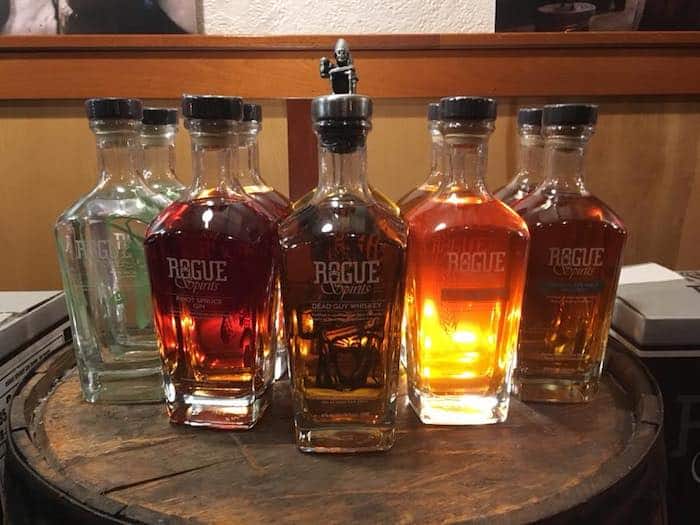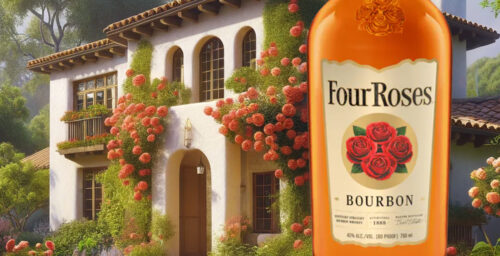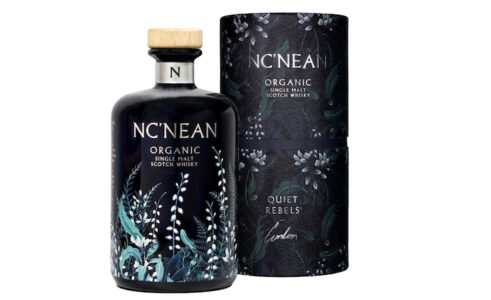When I think of a company that’s quintessentially Oregon, I think of Rogue. To me, Rogue embodies that Oregon spirit (pun intended) of plucky, gutsy, do-it-yourself-iness. They started making craft beer back in 1988, long before it was a thing, and now their site showcases more than 20 beers. And as for their booze, Rogue opened their distillery in 2003. In late 2015, we got to tour it.
And Rogue is one of the more self-sufficient operations; as we’ve previously mentioned, they grow their own grain, malt their own barley, make their own barrels, and distill all of their spirits themselves. Their whiskies and other spirits—Rogue also makes rum and two types of gins, a spruce gin and pinot spruce gin—are all crafted on Oregon’s coast, in Newport. Their spirits have won a slew of awards, including Best Oregon Whiskey, 2nd Place for Best Oregon Whiskey, and and Best Rye Whiskey at the 2018 International Whisky Competition.
Not long ago, however, Rogue’s whiskies had emerged to mixed reviews, largely centering on the youth of its product. (90 days? Really?) as well as its less drinkable flavor profiles (chipotle, we’re looking at you). But Rogue has changed course slightly to focus more on giving its products time to develop and even upping the ante with some updated packaging.
Recently, we got to try three of Rogue’s latest whiskey expressions: Dead Guy Whiskey, Oregon Rye Malt and Oregon Single Malt to see how they compare with their younger selves.

Tasting Notes: Rogue Dead Guy Whiskey
Vital stats: 80 proof, aged in new white oak, aged two years, distilled from the same malts as Rogue’s Dead Guy Ale, about $40.
Appearance: Yellowish, extremely pale gold, the color of an IPA–which makes sense, considering Dead Guy’s beery origins.
Nose: A little cheesy, actually. It’s nutty. Think nutritional yeast or cheese plate, not the foot-smell of a cheese chop. Also, lumber.
Palate: Also cheesy…and rubbery. Its beer provenance makes itself quite known. It tastes like beer. Like beer that’s been left out a while. Or like someone poured whiskey into my pint glass to commingle with the last sip of beer in it. In other words, there’s no there there. If you love beer and haven’t tried much whiskey, it’s perhaps a good intro. Or if a beery whiskey is what Rogue is going for, cool. But it’s not my thing.
Final thoughts: “I would never choose to drink this,” said my fellow taster. “I want whiskey to taste like whiskey. This tastes like flat dregs of a beer.” To be fair, he doesn’t drink beer. But I don’t disagree with him. Please, please, please, whiskey makers, let this be a lesson: More time spent on whiskey, less time spent on packaging. Please and thank you.
Score: 2/5
Tasting Notes: Oregon Rye Malt
Vital stats: 80 proof, uses Dream Rye grown on the Rogue Farm in Independence, Oregon, 51% rye, about $40.
Appearance: Like the Dead Guy, this is also very pale, maybe a tiny bit darker. The color of hay that’s getting on in years.
Nose: Very, very faint. You have to really spend time sniffing anything out here. Like a whiskey-scented perfume that’s worm off your wrists by the end of the day. Silk flowers. Lightly toasted French bread.
Palate: Not quite as beery, but it’s still there. Just like how the nose is faint, so is the rye aspect of this rye. I’m not sure if it’s because of its relative youth, its beer family tree, or the fact that the rye is malted, which might temper the more grainy quality of rye. Perhaps all of the above? This tastes like Rye Light. Not Rye 101, which (if I taught at Rye College) would have more of the chewiness and savory flavor profile of your typical rye. It has that, but not enough for me.
Final thoughts: This is a little watered down for my liking. Again, if you have a beer fan who wants to dip their toe into whiskey, have at it. But I wanted a more exciting ride–and got the bunny slope instead.
Score: 2.5/5
Tasting Notes: Oregon Single Malt
Vital stats: 80 proof, 100 percent malted barley single malt, aged five years in new American oak, about $50.
Appearance: We’ve been couching this in beer terms for the previous two so let’s continue: This is more like red ale in color.
Nose: Also light, though not as faint as the malted rye. This is more like candy: red licorice, Smarties–the tiny ones kids get at Halloween. Melted butter. Banana.
Palate: “That’s actually not bad,” my co-taster and I said to each other. It has a nougat quality, a Three Musketeers bar in a glass. That sounds gross as I write that but I actually liked it more than several other single malts I’ve had. There’s a richness to it. It begins like a bourbon and finishes like a scotch—with no smokiness.
Final thoughts: We really wanted to like this—and the others—more. Oregon represent, right? But maybe this is a case when time will tell. Maybe Rogue will eventually have a 10-year whiskey that kills it. Or, it could serve as a lesson to others: As my co-taster remarked, “Tasting these makes me think I should try and make whiskey, because I think I could do better.” Have at it, young man!
Score: 3/5








